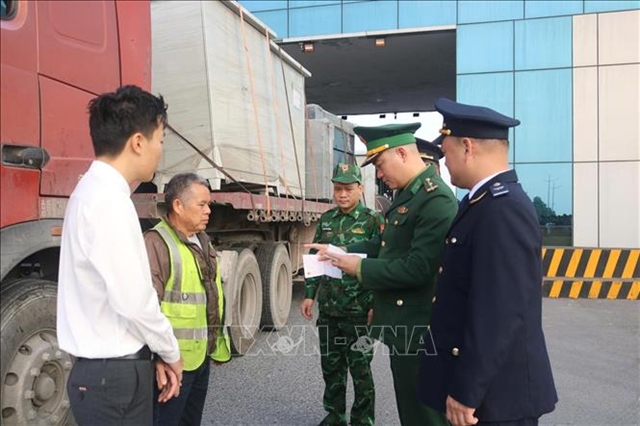 Society
Society


|
| A parking lot under Vĩnh Tuy Bridge on Minh Khai Street. — VNA/VNS Photo |
HÀ NỘI — It’s only the beginning of the morning but the parking lots on Phương Mai Street in Hà Nội are full.
Big hospitals are located on this street like the Hanoi French Hospital, Bạch Mai Hospital, the National Geriatric Hospital and the National Hospital of Dermatology and Venereology, and huge numbers of people visit these hospitals every day.
The parking lots at these hospitals are often overloaded.
Tuyết, a resident of Hoàng Liệt Ward, who had to go to Bạch Mai Hospital twice in two days for check-ups, couldn't find a private parking lot outside the hospital to park her bike.
“It was hot and stuffy, I couldn’t be more patient to find a parking place so I didn’t go in for the check-up,” Tuyết said.
Phạm Trọng Khuyến, who works at the gate of Bạch Mai Hospital, said that the parking area was full every day.
At the Central Obstetrics and Gynecology Hospital, the situation is slightly different. Most of the sidewalks are used as parking for motorcycles and cars.
At the entrance gate on Triệu Quốc Đạt Street, all the sidewalks are full of motorbikes and bicycles.
Vũ Bá Luỹ, head of the security guard team at the National Hospital of Obstetrics and Gynecology, said only employees of the hospital are allowed to park inside.
“There’s not enough room,” he said.
Meanwhile, owners of private parking lots outside the hospitals would charge much higher than municipal regulations allow.
The usual parking fee for motorbikes is VNĐ5,000 (nearly 20 US cents) from 6am to 6pm, and VNĐ8,000 (about 3 US cents) from 6pm to 6am. But people often have to pay VNĐ10,000 every time they park their bikes during the daytime.
Phan Thu Hoài, a Hà Nội resident, said she didn’t have a choice so she accepted to pay the inflated fees.
Due to lack of parking spaces, especially in central areas of the capital, many roads and sidewalks in the city have been turned into motorbike and car parking lots, causing problems for traffic safety and urban order.
Hà Nội currently has about 6.5 million vehicles of all kinds, not to mention special-purpose vehicles and those coming from other provinces. The growth rate of the vehicles is about 10 per cent for cars and 6.7 per cent for motorcycles each year.
Meanwhile, land reserves for urban transport and construction grow slowly, which leads to overloading for the city’s infrastructure system, especially in downtown areas.
It is estimated the city will need 1,400ha for the development of static traffic works by 2030. This is a real challenge given constrained land funds.
Hoàn Kiếm District has the smallest natural land area in Hà Nội (4.53 million sq.m) with nearly 200,000 motorcycles and 17,000 cars. These vehicles need more than 1 million sq.m for parking. There are now more than 300 licensed parking lots, mostly on roadways and sidewalks, but they meet only 14 per cent of demand.
The municipal People's Committee has prescribed 56 roads banned from parking bicycles, motorbikes, cars on sidewalks and roads to rectify the situation of arbitrary parking on the roadbed or sidewalk.
Short-term solution
Experts have said Hà Nội needs to consider granting permits for temporary parking lots at pending project land lots, as well as partially using wide sidewalk areas for parking.
Nguyễn Đức Toàn, Deputy Head of Traffic Infrastructure Management Unit of the Hà Nội Department of Transport, said the construction of parking lots in the city is underway.
He said that the city’s transport department had proposed the People's Committee allow the organisation of parking storage in confiscated land areas and project land that has not been inaugurated yet.
In addition, the Department of Transport has reported to the People's Committee to approve the list of roads and streets wide enough to be eligible for parking. VNS




